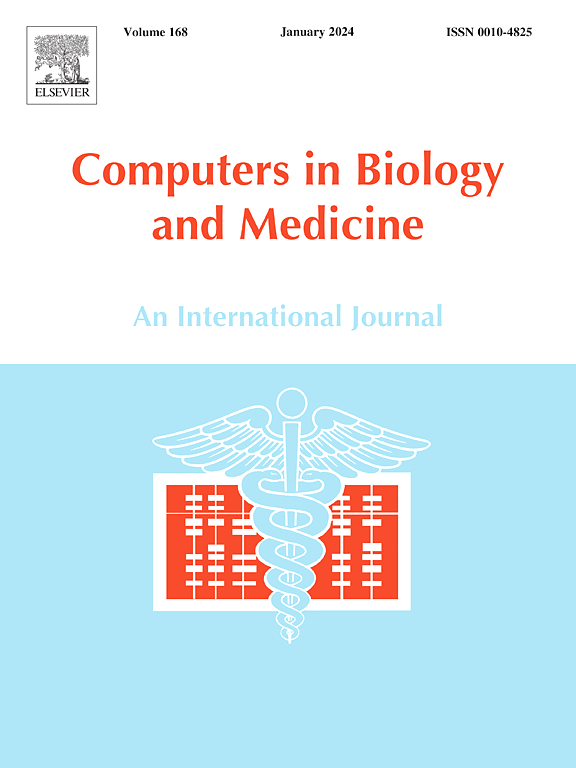Towards reliable WMH segmentation under domain shift: An application study using maximum entropy regularization to improve uncertainty estimation
IF 6.3
2区 医学
Q1 BIOLOGY
引用次数: 0
Abstract
Background
Accurate segmentation of white matter hyperintensities (WMH) is crucial for clinical decision-making, particularly in the context of multiple sclerosis. However, domain shifts, such as variations in MRI machine types or acquisition parameters, pose significant challenges to model calibration and uncertainty estimation. This comparative study investigates the impact of domain shift on WMH segmentation, proposing maximum-entropy regularization techniques to enhance model calibration and uncertainty estimation. The purpose is to identify errors appearing after model deployment in clinical scenarios using predictive uncertainty as a proxy measure, since it does not require ground-truth labels to be computed.
Methods
We conducted experiments using a classic U-Net architecture and evaluated maximum entropy regularization schemes to improve model calibration under domain shift on two publicly available datasets: the WMH Segmentation Challenge and the 3D-MR-MS dataset. Performance is assessed with Dice coefficient, Hausdorff distance, expected calibration error, and entropy-based uncertainty estimates.
Results
Entropy-based uncertainty estimates can anticipate segmentation errors, both in-distribution and out-of-distribution, with maximum-entropy regularization further strengthening the correlation between uncertainty and segmentation performance, while also improving model calibration under domain shift.
Conclusions
Maximum-entropy regularization improves uncertainty estimation for WMH segmentation under domain shift. By strengthening the relationship between predictive uncertainty and segmentation errors, these methods allow models to better flag unreliable predictions without requiring ground-truth annotations. Additionally, maximum-entropy regularization contributes to better model calibration, supporting more reliable and safer deployment of deep learning models in multi-center and heterogeneous clinical environments.
域移位下WMH可靠分割:最大熵正则化改进不确定性估计的应用研究
背景白质高信号(WMH)的准确分割对临床决策至关重要,特别是在多发性硬化症的背景下。然而,区域移位,如MRI机器类型或采集参数的变化,给模型校准和不确定性估计带来了重大挑战。本研究探讨了域漂移对WMH分割的影响,提出了最大熵正则化技术来增强模型校准和不确定性估计。目的是使用预测不确定性作为代理度量来识别在临床场景中模型部署后出现的错误,因为它不需要计算基础真值标签。方法在WMH Segmentation Challenge和3D-MR-MS两个公开的数据集上,采用经典的U-Net架构进行了实验,并评估了最大熵正则化方案,以改善域移位下的模型校准。通过Dice系数、Hausdorff距离、预期校准误差和基于熵的不确定性估计来评估性能。结果基于熵值的不确定性估计可以预测分布内和分布外的分割误差,最大熵正则化进一步增强了不确定性与分割性能之间的相关性,同时也改善了域移位下的模型校准。结论最大熵正则化改进了域移位下WMH分割的不确定性估计。通过加强预测不确定性和分割错误之间的关系,这些方法允许模型更好地标记不可靠的预测,而不需要基础事实注释。此外,最大熵正则化有助于更好的模型校准,支持在多中心和异构临床环境中更可靠、更安全地部署深度学习模型。
本文章由计算机程序翻译,如有差异,请以英文原文为准。
求助全文
约1分钟内获得全文
求助全文
来源期刊

Computers in biology and medicine
工程技术-工程:生物医学
CiteScore
11.70
自引率
10.40%
发文量
1086
审稿时长
74 days
期刊介绍:
Computers in Biology and Medicine is an international forum for sharing groundbreaking advancements in the use of computers in bioscience and medicine. This journal serves as a medium for communicating essential research, instruction, ideas, and information regarding the rapidly evolving field of computer applications in these domains. By encouraging the exchange of knowledge, we aim to facilitate progress and innovation in the utilization of computers in biology and medicine.
 求助内容:
求助内容: 应助结果提醒方式:
应助结果提醒方式:


